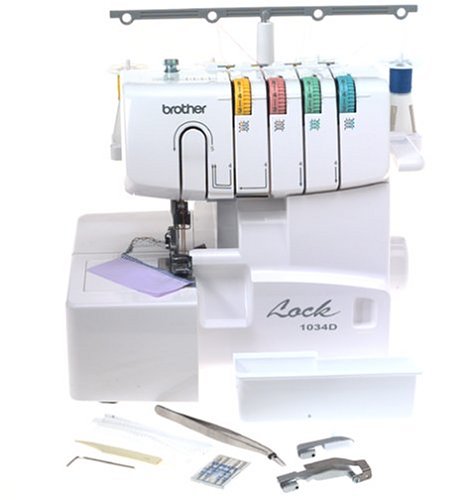Sewing machine is a mechanical or electromechanical machine used to join fabrics using thread. It can create a wide variety of plain or patterned stitches. Sewing machines were introduced in the 1800s; it is one of the most important discoveries in the textile industry.
Of the different types of sewing machines, domestic sewing machines are the perfect tool for sewing. By the mid-nineteenth century, domestic sewing machines found a place in all U S homes to help women in the home production of clothing.
Introduced as a boon to the homemaker, domestic sewing machines are mainly used for domestic purposes and are manufactured to perform different tasks such as creation of buttonholes, stitching buttons on to the piece of clothing etc. Even though there are sewing machines that stitch using one, three, four or more threads, most of the domestic sewing machines use a two thread stitch called the lockstitch.
Also known as home use sewing machines, domestic sewing machines do not have feed dogs that pull the fabric to be sewn under the needle. As they don't have feed dogs, one has to pull the fabric with their hand. There are three basic types of domestic sewing machines-mechanical, electronic, and embroidery machines.
Lightweight sewing machine, straight stitch only sewing machine, embroidery only sewing machine, single-speed mini sewing machine, double-stitch double-speed home sewing machine and battery-operated handheld sewing machine are some of the domestic sewing machines available in the market.
Domestic Sewing Machine Company and Janome are some of the leading manufacturers of domestic sewing machines. Apart from providing sewing machines, they offer a wide range of accessories such as belts, bobbins, bobbin case, carrying case, fluids, guides, needles, organ, needle plates, presser feet, software, thread, and thread holders. Nowadays, it is possible to purchase domestic sewing machines through the Internet. EBay and Bizrate are some of the Internet dealers of domestic sewing machines.
While purchasing domestic sewing machines, be cautious to select the one that suits your needs and price range. Before purchasing domestic sewing machines, it is very important to determine the need for the machine, whether it is for mending or hemming, creating designer clothes, or for embroidery. Test the machine yourself once you have decided what sewing machine is best for you.
 | Price : $198.54
| Price : $198.54









